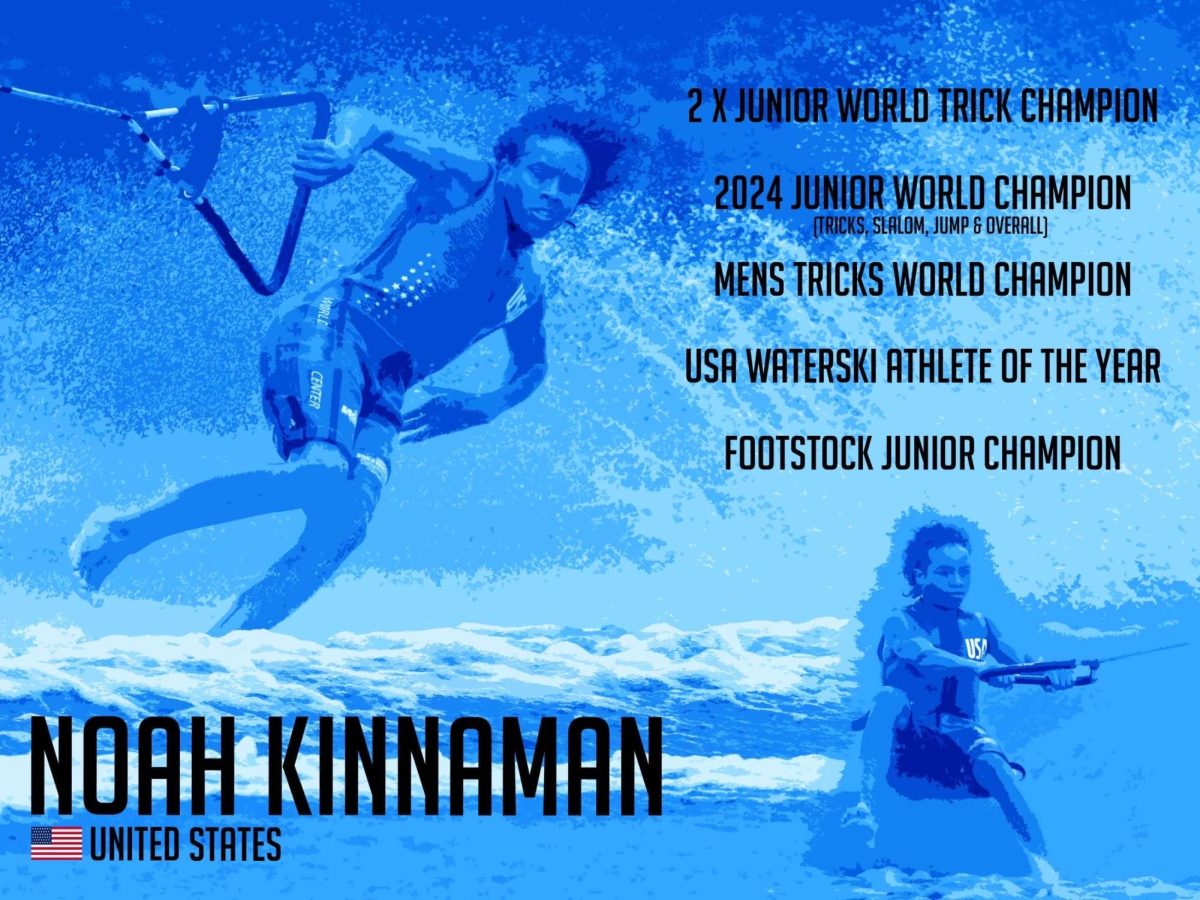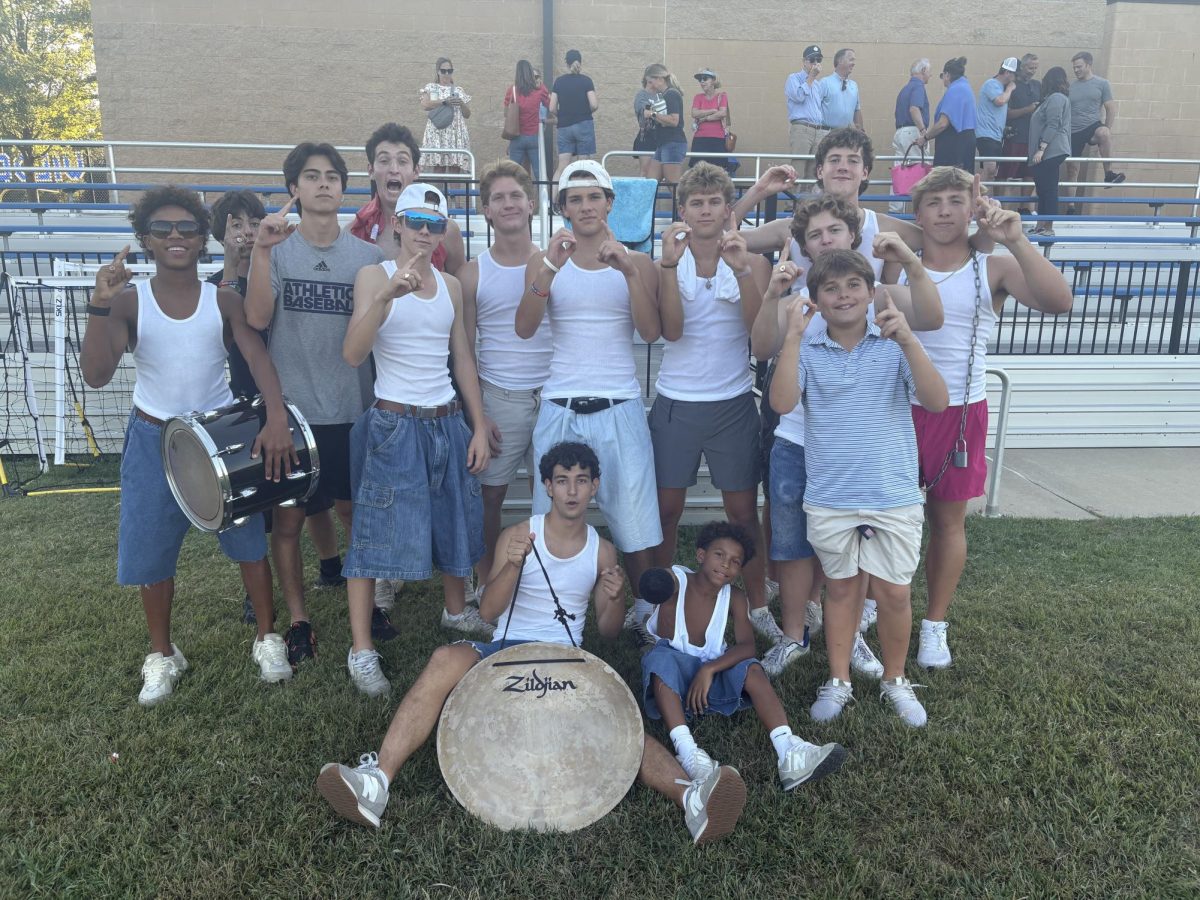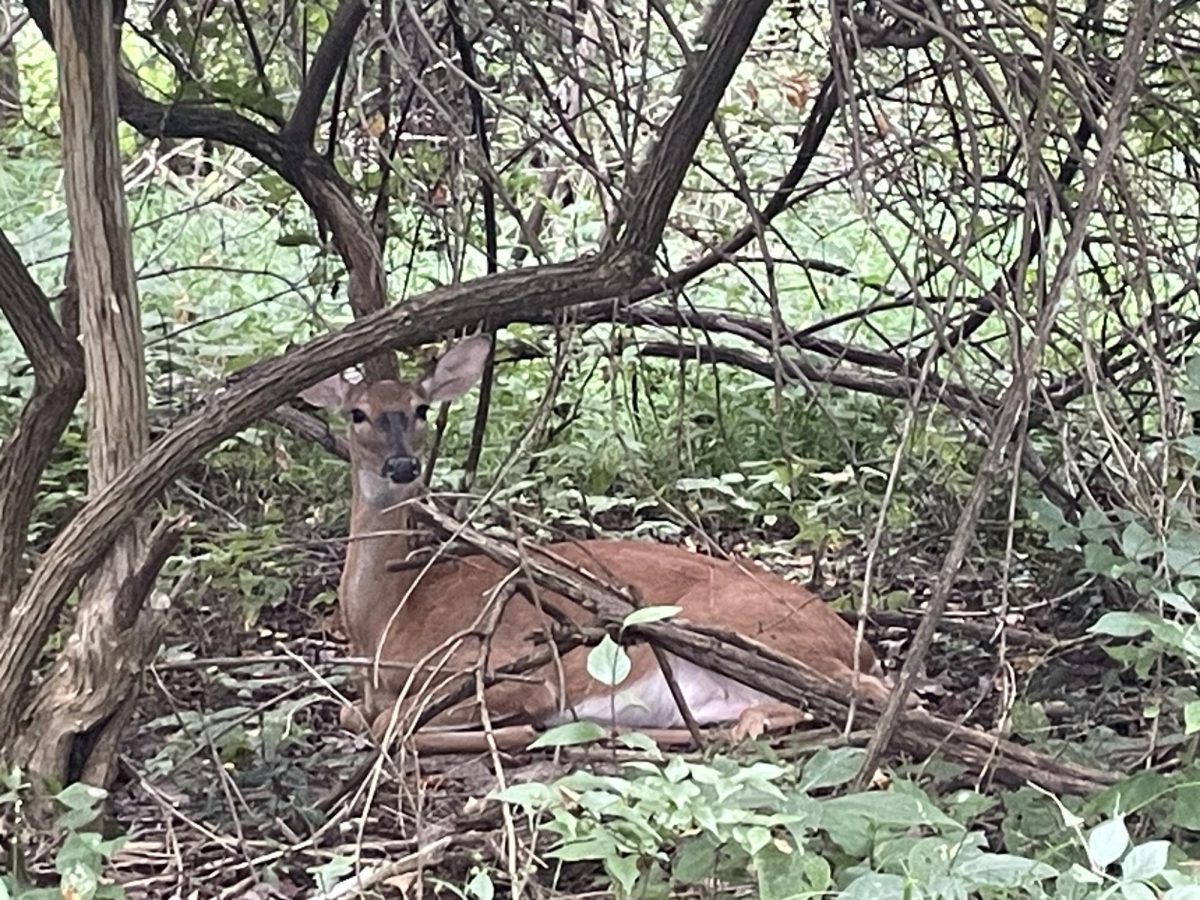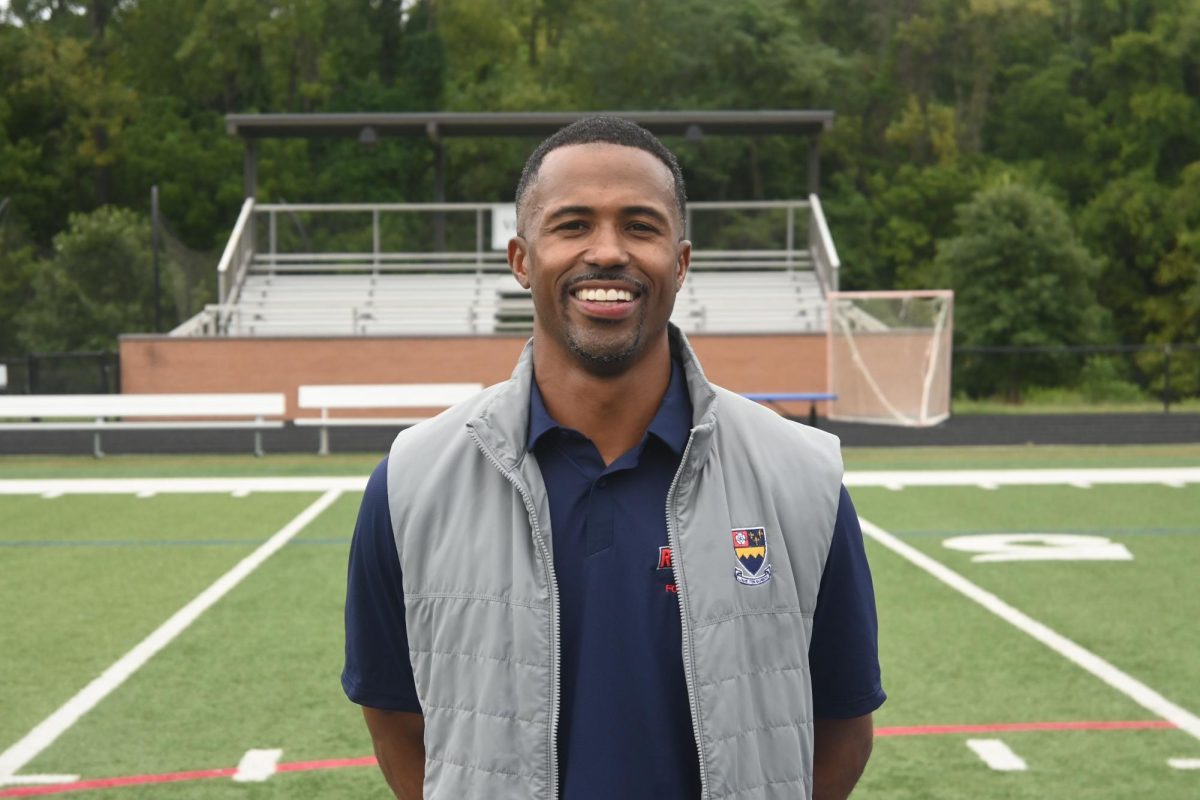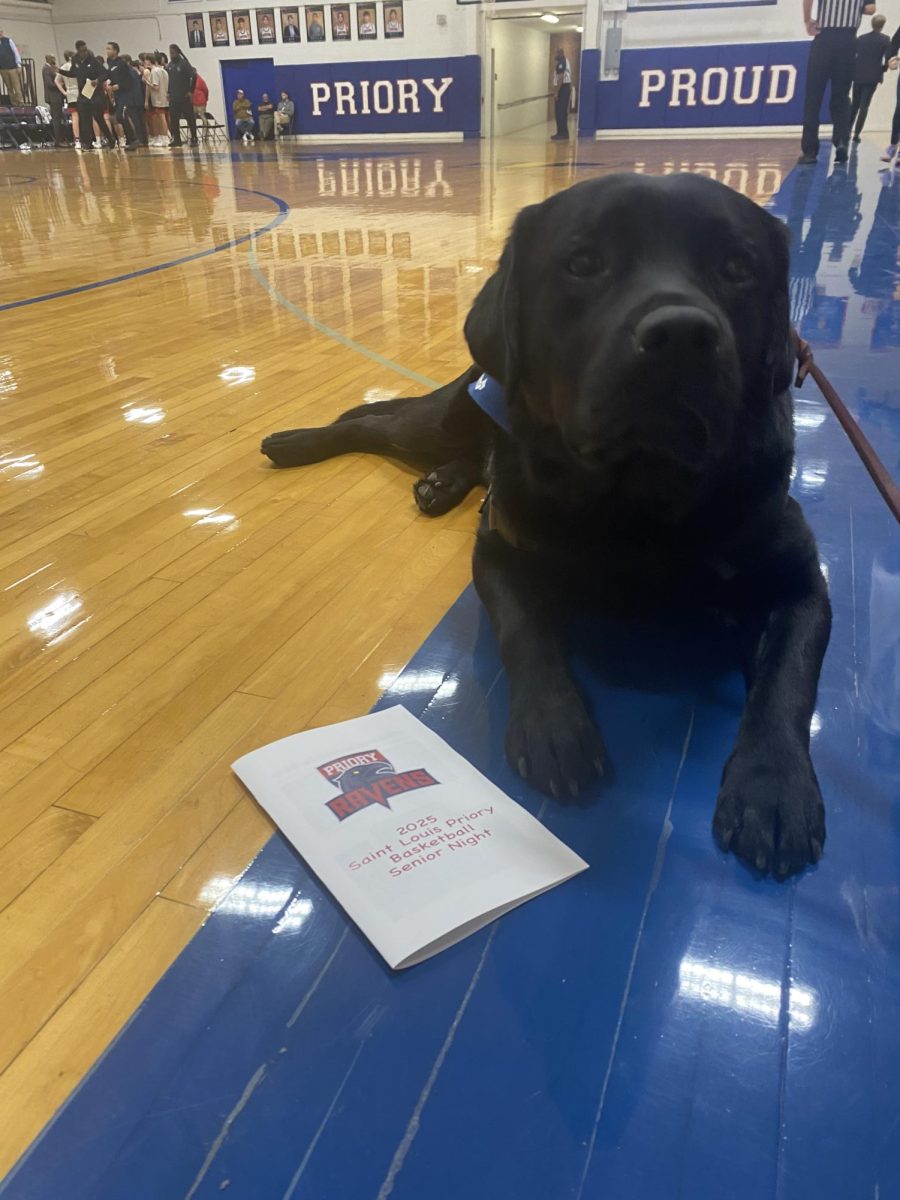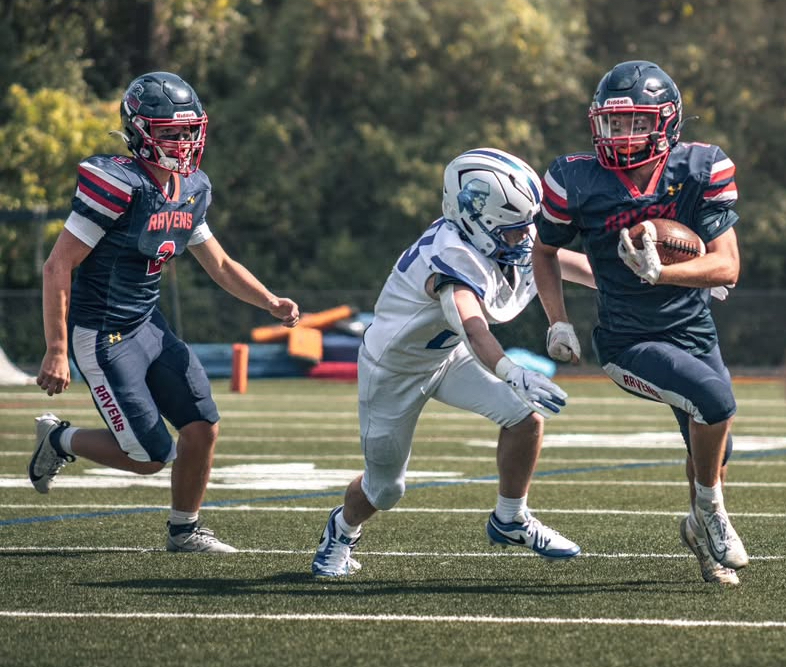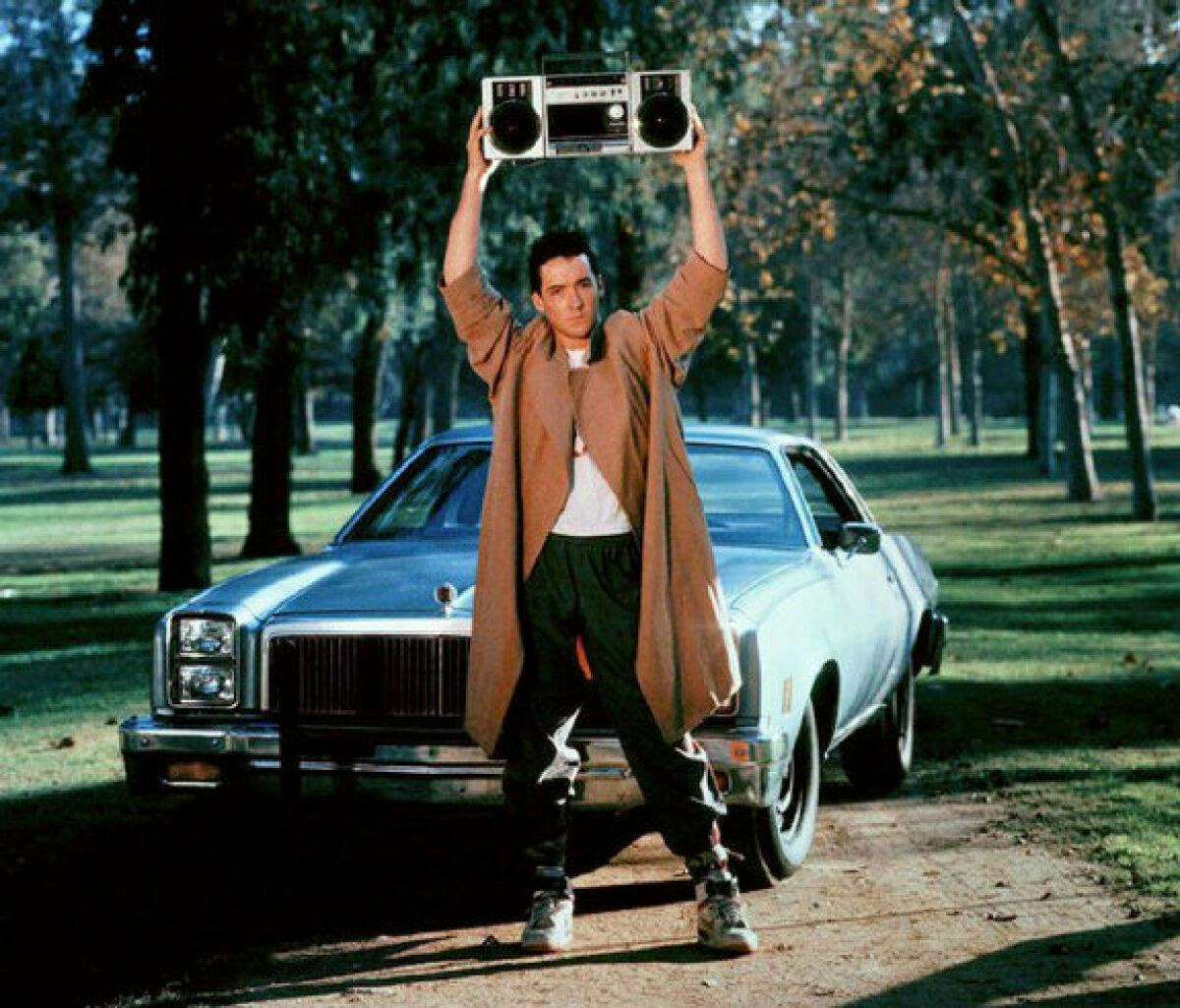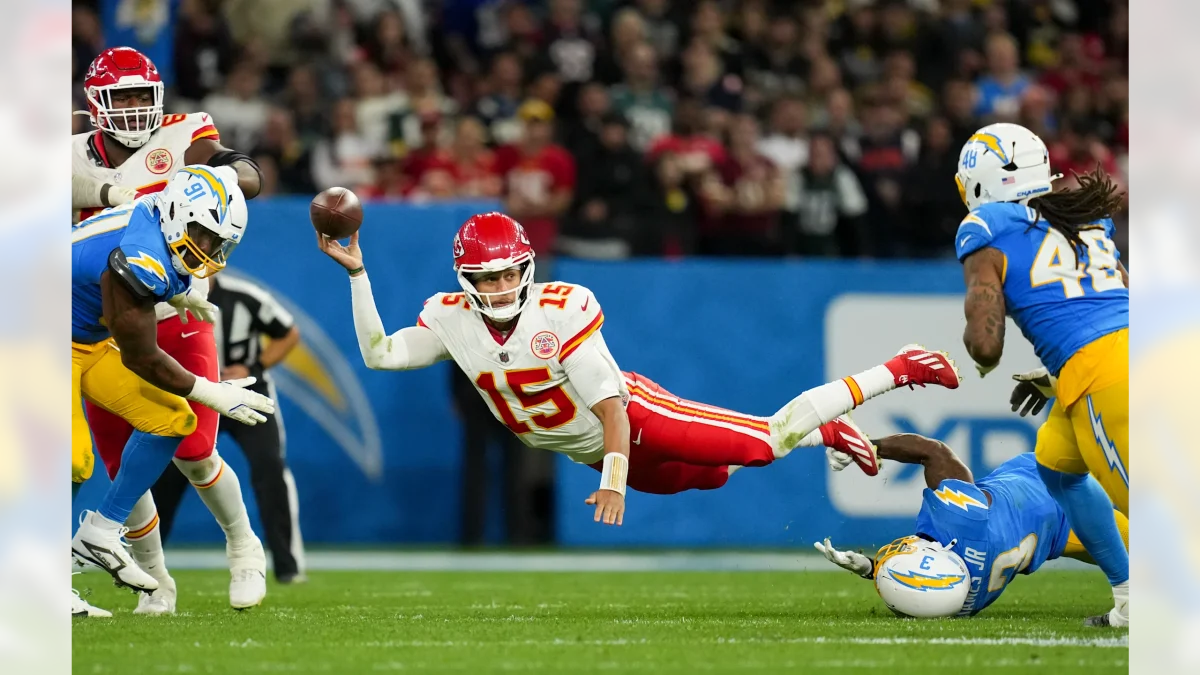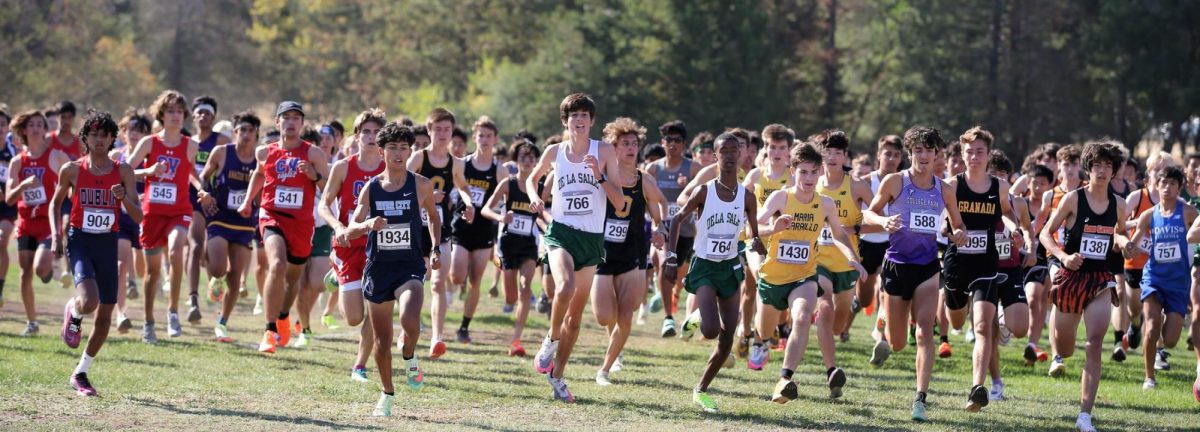Noah Kinnaman is the 2024 World Barefoot Waterskiing Junior champion, an impressive accomplishment unknown to most Priory students. He spent three weeks during hurricane season in Florida competing for the World Barefoot Water Skiing Junior Championship. The Record editors interviewed him and asked several questions about his experiences.
How did you get into barefoot waterskiing?
I started regularly skiing when I was 9 or 10 in Lake St. Louis where I live and you can sign up for different kinds of skiing because there are different disciplines like trick skiing, jump skiing, and a lot more. I signed up for barefoot skiing and really enjoyed it and have been going since then.
How do you train for competitions?
You’re looking for the smoothest water you can get when you’re out training. I train in Florida and there are 4 lakes that we ski on and depending on the wind direction we will go to the shoreline that has the smoothest water. There are really tall weeds and wherever the wind is blowing into the weeds, the water will be the smoothest and you’ll get a half a mile run where you can go through your practice runs whether you’re jumping, doing slalom, or tricking.
Why do you have to go to Florida to train and not just at Lake St. Louis?
It’s not so much that I need to go to Florida but it’s just where a lot of the tournaments are hosted. There are the regionals because there are different regions that you have to ski for example for the Midwest it is in Wisconsin but there are tournaments out west like Helena Montana where nationals were last year and all over.
How large is barefoot waterskiing as a sport (in terms of number of athletes or viewers?
Compared to mainstream sports like basketball or soccer it is obviously not as common. If you asked most people what barefoot water skiing is they probably wouldn’t think it is a thing. It is definitely smaller in that aspect but in its discipline in the top three. The biggest of all the disciplines is regular skiing which has trick slalom and jump as well. Wakeboarding is probably the second highest discipline.
Where do you compete in the world championships?
I have only been to two because they are every two years. One was in Australia a couple of years ago and it was in America this year. Usually it’s between America, Australia, and somewhere in Europe.
How do you qualify for the world championships?
Only 110 people make world championships and to qualify you have to make the qualifying scores in each event and age and skill category. I’m in juniors so I have to qualify for juniors by jumping a certain distance and slalom a certain number and trick a certain number. There is an open division where you can crossenter. I skied junior and open where I won tricks for open and swept all of the events in junior. I have gone down as one of the greatest of all time in juniors because I swept trick, jump, and slalom this year and won tricks last year. There is a tournament in December where I hope to set the world record for tricks.
How do you balance school and waterskiing?
It is especially hard because you see the other people skiing and they don’t have to worry as much about school. It comes down to time management and when I’m out in the boat I’m not thinking about school.
How has your participation in this activity impacted the rest of your life?
Skiing has definitely had a tremendous impact on my life because I’ve met so many different people and gotten a lot of insight into life from the people I’ve met at various tournaments. I’ve made a lot of good friends at these world championships that I still keep in contact with even though I wont see them for another two years.
How was your experience dealing with the hurricanes during your most recent competition in Florida?
That was interesting. It was definitely interesting. There was one hurricane when I was down there. Hurricane Milton was the first one and it wasn’t as bad as we anticipated. We just couldn’t train for a couple of days because the winds were so high even a few days after the hurricane passed. It definitely affected my training time and I wasn’t able to prepare for the tournament as much. The hurricane during the tournament was more annoying because it mixed up events and forced me to be ready at a moment’s notice to go to a different lake and ski. They ended up having to end the tournament a day early and everyone got two rounds instead of the typical three. We were staying about 30 minutes away from the site and the eye went right over us. It was very loud and our screen porch was completely ripped up. The transformers exploded and it turned the sky green and the lakes rose about three feet because of all of the rain. Trees and massive signs were snapped like toothpicks, which was crazy.
Have you ever gotten injured while water skiing / are there any common injuries?
Last nationals was my first major injury because I broke my knee jumping and it put me out for about 8 months. It was during the winter months which wasn’t the worst because skiing when it’s cold is terrible even though it’s still Florida.
Did you win any money?
I personally have not because it isn’t allowed because everything is ran through like an Olympic Committee but athletes could get paid when barefoot waterskiing was in the X Games. Since it’s similar to the Olympics you can get any money outside of sponsorships.
Is barefoot waterskiing on track to become an Olympic sport?
It can’t be an Olympic sport because there are motors and engines involved, but it can be back in the X Games which it probably will be soon.
Do you plan on pursuing barefoot waterskiing in college or professionally?
During college, it won’t be my main priority and I would consider myself a professional now. I will keep skiing throughout summers and hope to go to school somewhere in Florida.
Is your size an advantage or disadvantage?
For jumping it’s not very helpful because you want to have a lot more mass in order to jump farther. A lot of the bigger skiers jump around 26 meters but for my size, being able to jump 22 meters is incredible. In tricks, however, I have the ideal body shape for a tricker because there are so many moving parts which makes it important to stay tight and compact.
